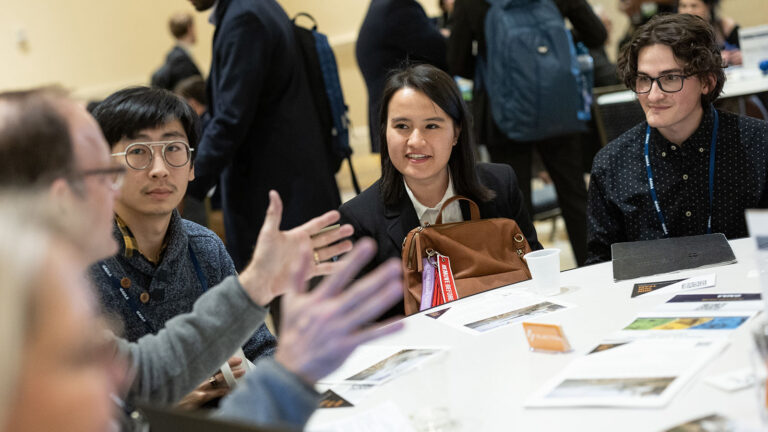Stay Up to Date
Submit your email address to receive the latest industry and Aerospace America news.
Here at Aerospace America, we’re thinking hard about how the growing emphasis in the United States on diversity, equity and inclusion should affect our work. I would not pretend to have all the answers yet, but I want to share a few insights.
We had an internal discussion about this topic back in 2015, although we did not yet know the term “DEI.” We were in a “huddle room” at AIAA headquarters, and we were beginning to explore an article about the space shuttle Challenger explosion ahead of the 30th anniversary. Our idea was to interview those directly connected to key aspects of the mission and the management of the aftermath. The question arose about whether we needed to make sure we chose a gender and racially diverse set of interviewees. It was a lively discussion. We decided that we needed to make sure that we were not wearing blinders or subconsciously favoring particular sources. We also decided that our main criteria had to be the interviewee’s role and expertise on Jan. 28, 1986.
The point is that in some circumstances, the best a journalist can do is reflect the state of the diversity that exists in the context of the story. If NASA wasn’t very diverse in 1986, we cannot fix that. If we tried, we would risk giving readers the incorrect impression that NASA was more diverse in 1986 than it actually was. Our job as journalists is to capture reality and tell the truth “without fear or favor,” as Adolph S. Ochs, owner and publisher of The New York Times, wrote in 1896.
In that vein, suppose we were creating a reaction story about how college students in America view NASA’s pledge to go back to the moon to stay. In a case like that, we would absolutely need to make sure that those we interview reflect the diversity of America. We would not be capturing reality or telling a truth if we did not do so.
In short, how we wrap DEI into our journalism depends very much on the topic and purpose of the story. Of course, when we conceive of the purpose of a story, we must also take into account issues of DEI. With the approach of the Apollo 11 anniversary, for example, it would have been conceivable for us to wonder about diversity early in the space program and dig into that. My hat is off to Margot Lee Shetterly for doing exactly that in her 2016 book, “Hidden Figures: The American Dream and the Untold Story of the Black Women Who Helped Win the Space Race.”
Over time, you will see the voices in Aerospace America become noticeably more diverse, primarily because the DEI initiatives of government agencies, universities, corporations and nonprofits are beginning to pay off. Newsmakers such as CEOs, program managers, professors and scientists will come from a wider range of backgrounds, and our coverage will reflect this shift.
About Ben Iannotta
As editor-in-chief from 2013 to March 2025, Ben kept the magazine and its news coverage on the cutting edge of journalism. He began working for the magazine in the 1990s as a freelance contributor. He was editor of C4ISR Journal and has written for Air & Space Smithsonian, New Scientist, Popular Mechanics, Reuters and Space News.
Related Posts
Stay Up to Date
Submit your email address to receive the latest industry and Aerospace America news.




